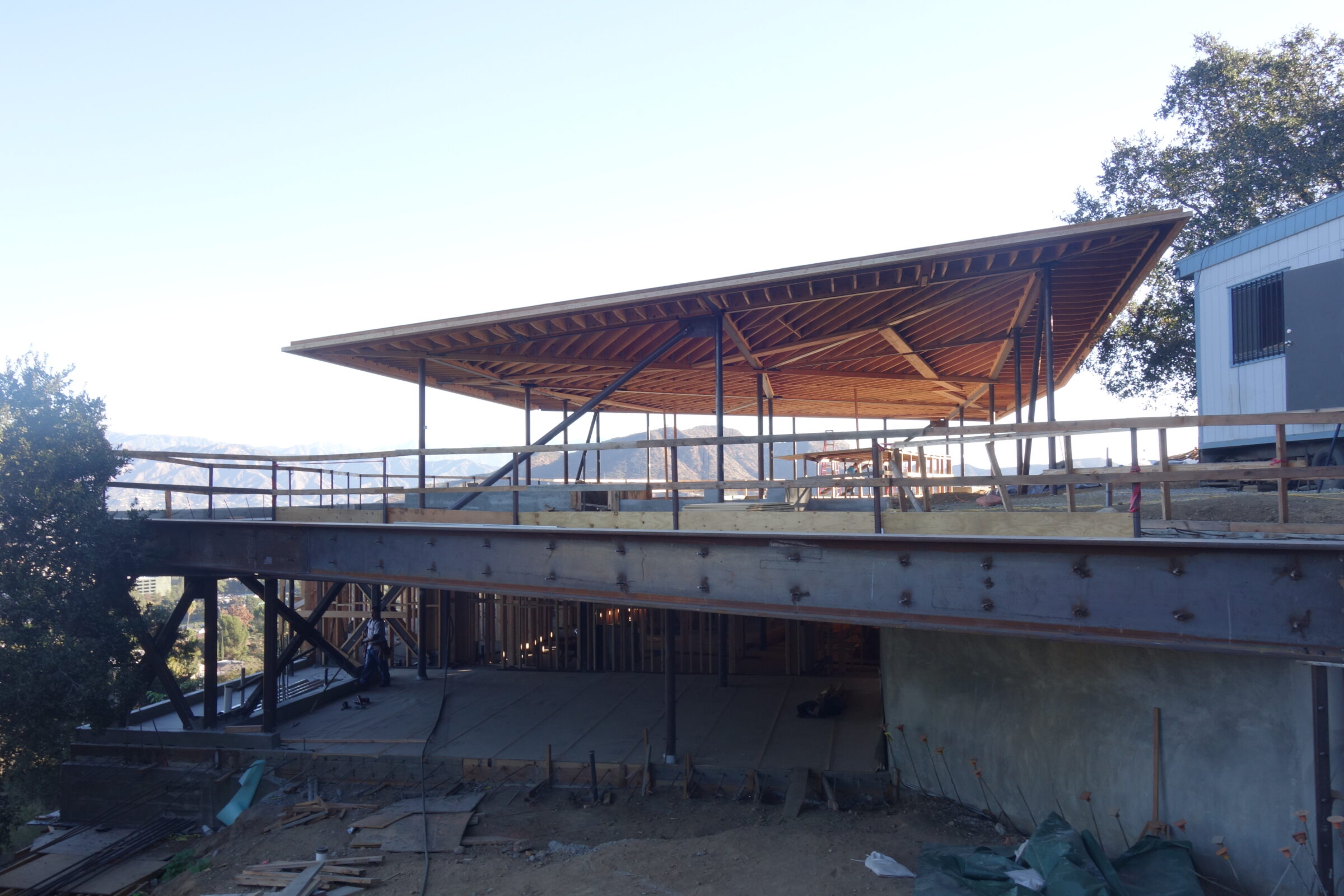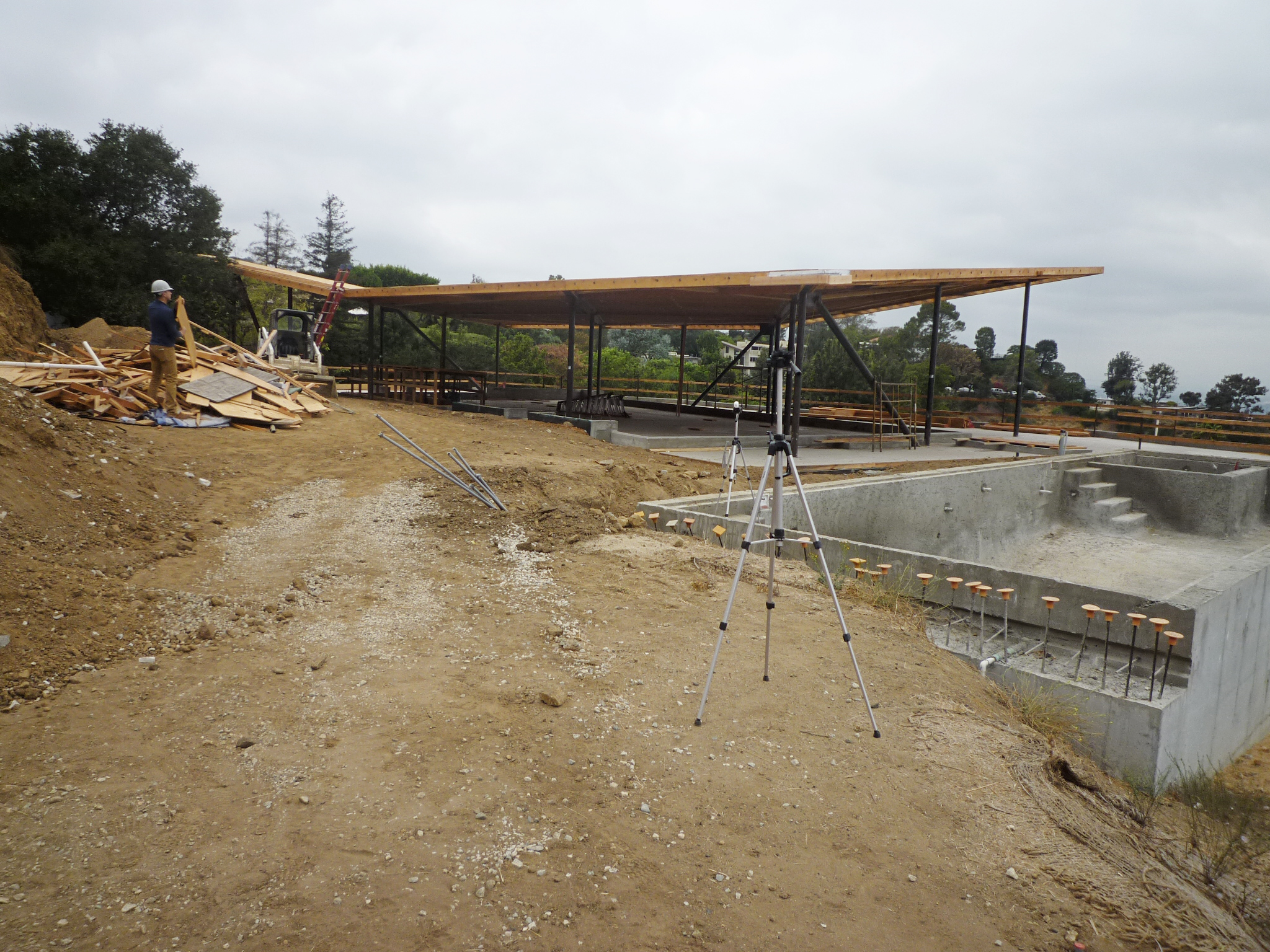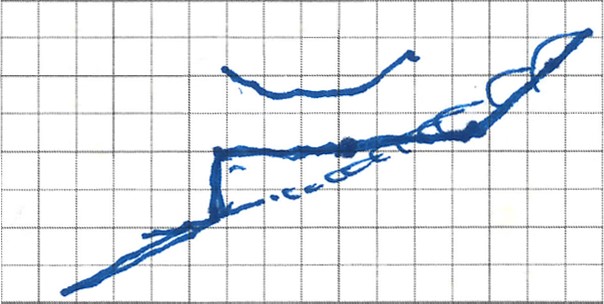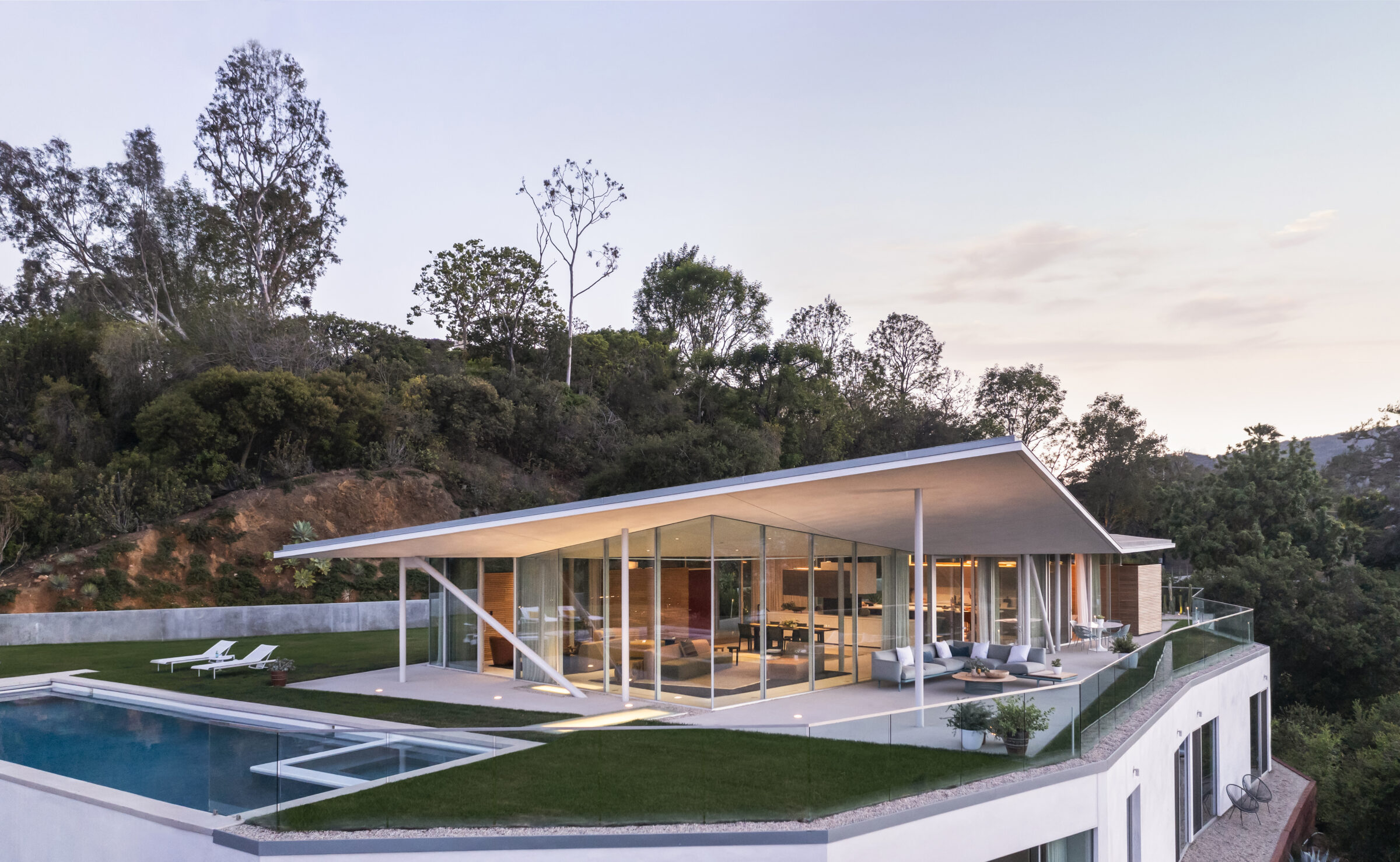- Project
- California House
- Story Collection
- Buried Buildings

California House is inspired by the utilitarian simplicity of the Case Study Houses, experiments in affordable, innovative design developed in Los Angeles between 1945 and 1966. By establishing a direct relationship with the hillside and accounting for the region’s seismic conditions, California House expands on mid-century architectural principles, reducing its impact on the landscape and increasing the energy efficiency of its architecture.
Carved into the hill, the lower floor, with its expanse of green roof, creates a strong ground-plane, or bench, in the steeply sloping land. Private family spaces are arrayed along the hillside, meant to be essentially invisible.


At California House, architecture comfortably becomes one with the site.
This invisibility contrasts with the strong sculptural form above. A glass-sided pavilion creates a loft-like space for the communal activities of living, cooking, dining, and entertaining. Everything is configured to maintain the simplicity and openness of the space. Kitchen and spatial divisions never touch the ceiling so that it seems to float above on independent steel supports. Three solid wood-faced “boxes” contain “messy” program elements, maintaining the integrity of the large space.

Like a vast parasol, the roof of the house is a rectangle with upturned edges that extend well beyond the footprint of the pavilion. By twisting its position in relation to the glass rectangle, at all times of day or season, at one corner or another, there is always either shade or sunlight to be found.